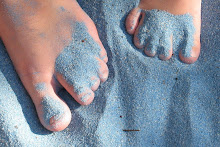When did toothpaste stop being just toothpaste?
It's almost bewildering to pick out a tube of toothpaste today. Even my favorite brand carries so many options that I feel as if making a choice means that I'm failing in some other area.
For example, I can get a tube with baking soda, peroxide, and tartar protection in a "fresh mint." But that means I have to forgo the breath freshening Scope add-on. So, what does that say about me? Clearly, I care more about my own hygiene than whether you have to be subject to my bad breath.
I recently ran out of my favorite toothpaste and had to scramble around to find a travel tube. In desperation, I opened a travel tube of something other than my favorite and discovered that it isn't toothpaste, it's a "whitening mint experience." So, now I'm putting an "experience" on my teeth multiple times per day. That's just weird.
But toothpaste or "whitening mint experiences" are not really modern inventions -- despite the ability to buy all sorts of flavors and add-ons. The ancient Egyptians are believed to have made a "dental cream" by mixing powdered ashes of oxen hooves with myrrh, burned egg shells, pumice, and water.
The earliest record of an actual "toothpaste" (I don't know about the "whitening mint experience")was in 1789. A recipe of the day called for using burnt bread. (Probably someone with my track record for cooking made this one up.)
Another toothpaste recipe at the time called for:
1 1/2 oz. dragons blood (Now we know why we can't find them.)
1 1/2 oz. cinnamon
1 oz. burnt alum
Well, brush on, everyone. I'm going to return to my "whitening mint experience."
Friday, April 2, 2010
Subscribe to:
Post Comments (Atom)

No comments:
Post a Comment